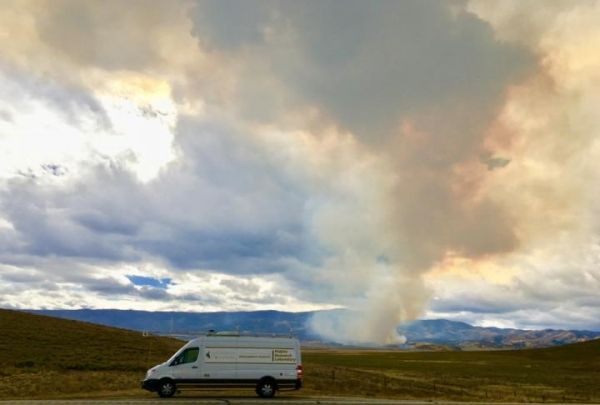A study of biomass burning aerosols led by University of Wyoming researchers revealed that smoke from wildfires has more of a cooling effect on the atmosphere than computer models assume.
“The study addresses the impact of wildfires on global climate, and we extensively used the NCAR-Wyoming supercomputer (Cheyenne),” says Shane Murphy, a UW associate professor of atmospheric science. “Also, the paper used observations from UW and other teams around the world to compare to the climate model results. The main conclusion of the work is that wildfire smoke is more cooling than current models assume.”
Murphy was a contributing author of a paper, titled “Biomass Burning Aerosols in Most Climate Models Are Too Absorbing,” that was published Jan. 12 (today) in Nature Communications, an open-access journal that publishes high-quality research from all areas of the natural sciences. Papers published by the journal represent important advances of significance to specialists within each field.
Hunter Brown, who graduated from UW in fall 2020 with a Ph.D. in atmospheric science, was the paper’s lead author. Other contributors to the paper included researchers from Texas A&M University; North Carolina A&T State University; the University of Georgia; the Finnish Meteorological Institute; the Center for International Climate and Environmental Science, and Norwegian Meteorological Institute, both in Oslo, Norway; the University of Reading in the United Kingdom; North-West University in South Africa; the University of Science and Technology of China in Hefei, China; and Pacific Northwest National Laboratory in Richland, Wash.
Read more at University of Wyoming
Image: The University of Wyoming Mobile Lab measures biomass burning smoke in Wyoming from a couple of years ago. This is an example of the type of field measurement that was used to compare with computer models. (Credit: Rachel Edie)


